Colour: Red Produced: 1962 Production: 14,531 (1962) Back in 1953, Chevrolet’s launch of a two-seater sportscar was a radical departure for a marque hitherto associated almost exclusively with sensible family transport. Based on Harley Earl’s EX-122 show car of 1952, the Corvette made use of existing GM running gear, suitably modified, and a shortened chassis frame around which was wrapped striking glassfibre coachwork. A novelty at the time, glassfibre construction kept tooling costs down to a level commensurate with low-volume production and enabled the ’Vette to go from design to introduction in less than two years. Motive power came from Chevrolet’s 235.5ci (3.8-litre) overhead-valve straight six, which in ‘Blue Flame’ (Corvette) specification produced 150 or 155bhp. Unusually for a sportscar there was automatic transmission: GM’s two-speed Powerglide. The Corvette in its second (1956-onwards) incarnation evolved slowly, gaining a four-headlight front end for ’58 and a restyled ‘duck tail’ rear, before gaining a quartet of tail lights and an enlarged trunk, for ’61. The ’Vette was facelifted and improved annually, with more and more options becoming part of the car’s standard inventory in the process; in 1962 a stock Corvette came with electric clock, rev counter, heater/de-froster, seat belts, windshield washer and outside rear-view mirror. Major chassis engineering changes were few, but included a new rear anti-roll bar and aluminium radiator. The big news for ’62 was the introduction of a 327ci (5.4-litre) V8 engine as the Corvette powerplant with maximum outputs ranged from 250 to 360bhp on fuel injection. Equipped with the latter (RPO 582) unit, the Corvette was a genuine 140mph car. Chevrolet totally redesigned the Corvette as the ‘Sting Ray’ for 1963, making the ’62 model one of the more collectible. Previously forming part of Peter Kaus’s famous Rosso Bianco Collection, this 1962 Corvette roadster is offered with 1982 State of Louisiana Certificate of Title (in the name of Nicholas J Hingel); sales invoice (to Rosso Bianco, 1988); transport and insurance papers; EU customs document and duty invoice; assorted photographs and an original instruction manual. Although offered from long term museum display, the car is in good order throughout and is reported as powerful and driving well. • Iconic status • Last-of-the-line model • Stunning looks 1962 Chevrolet Corvette Roadster Châssis no. 208 67S 105338 Couleur : Rouge Fabrication : 1962 Production : 14 531 exemplaires en 1962. En 1953, lorsque la marque Chevrolet lance une voiture de sport deux places, il s’agit d’un changement radical au sein d’une entreprise dont la production avait été presque exclusivement concentrée sur des voitures familiales très « raisonnables ». Sur la base de l’EX 122, une voiture d’exposition dessinée par Harley Earl en 1952, la Corvette était équipée de matériel roulant existant déjà dans la gamme GM, modifié en conséquence, et d’un châssis raccourci entouré d’une étonnante carrosserie en fibre de verre. Il s’agissait à l’époque d’une nouveauté, la construction en fibre de verre nécessitait des outils de fabrication dont le prix de revient était très élevé, vu le petit nombre de véhicules fabriqués dans ce matériau. Du coup, il faudra deux ans pour que la « Vette » passe du stade de simple dessin à la production industrielle. Pour faire avancer la voiture, on utilise le Chevrolet six cylindres en ligne 235,5ci (3,8 litres) à soupapes en tête qui dans sa version « Blue Frame », celle de la Corvette, produit de 150 à 155 chevaux. La voiture est équipée de la boîte GM two-speed Powerglide, la transmission automatique sur une voiture de sport est pourtant assez inhabituelle à l’époque. La Corvette évoluera lentement vers sa seconde version (à partir de 1956), se voyant équipée de quatre phares sur le capot avant en 1958 et pourvue d’une partie arrière redessinée en forme de queue de canard, partie qui recevra en 1961 quatre petits feux ronds su
Colour: Red Produced: 1962 Production: 14,531 (1962) Back in 1953, Chevrolet’s launch of a two-seater sportscar was a radical departure for a marque hitherto associated almost exclusively with sensible family transport. Based on Harley Earl’s EX-122 show car of 1952, the Corvette made use of existing GM running gear, suitably modified, and a shortened chassis frame around which was wrapped striking glassfibre coachwork. A novelty at the time, glassfibre construction kept tooling costs down to a level commensurate with low-volume production and enabled the ’Vette to go from design to introduction in less than two years. Motive power came from Chevrolet’s 235.5ci (3.8-litre) overhead-valve straight six, which in ‘Blue Flame’ (Corvette) specification produced 150 or 155bhp. Unusually for a sportscar there was automatic transmission: GM’s two-speed Powerglide. The Corvette in its second (1956-onwards) incarnation evolved slowly, gaining a four-headlight front end for ’58 and a restyled ‘duck tail’ rear, before gaining a quartet of tail lights and an enlarged trunk, for ’61. The ’Vette was facelifted and improved annually, with more and more options becoming part of the car’s standard inventory in the process; in 1962 a stock Corvette came with electric clock, rev counter, heater/de-froster, seat belts, windshield washer and outside rear-view mirror. Major chassis engineering changes were few, but included a new rear anti-roll bar and aluminium radiator. The big news for ’62 was the introduction of a 327ci (5.4-litre) V8 engine as the Corvette powerplant with maximum outputs ranged from 250 to 360bhp on fuel injection. Equipped with the latter (RPO 582) unit, the Corvette was a genuine 140mph car. Chevrolet totally redesigned the Corvette as the ‘Sting Ray’ for 1963, making the ’62 model one of the more collectible. Previously forming part of Peter Kaus’s famous Rosso Bianco Collection, this 1962 Corvette roadster is offered with 1982 State of Louisiana Certificate of Title (in the name of Nicholas J Hingel); sales invoice (to Rosso Bianco, 1988); transport and insurance papers; EU customs document and duty invoice; assorted photographs and an original instruction manual. Although offered from long term museum display, the car is in good order throughout and is reported as powerful and driving well. • Iconic status • Last-of-the-line model • Stunning looks 1962 Chevrolet Corvette Roadster Châssis no. 208 67S 105338 Couleur : Rouge Fabrication : 1962 Production : 14 531 exemplaires en 1962. En 1953, lorsque la marque Chevrolet lance une voiture de sport deux places, il s’agit d’un changement radical au sein d’une entreprise dont la production avait été presque exclusivement concentrée sur des voitures familiales très « raisonnables ». Sur la base de l’EX 122, une voiture d’exposition dessinée par Harley Earl en 1952, la Corvette était équipée de matériel roulant existant déjà dans la gamme GM, modifié en conséquence, et d’un châssis raccourci entouré d’une étonnante carrosserie en fibre de verre. Il s’agissait à l’époque d’une nouveauté, la construction en fibre de verre nécessitait des outils de fabrication dont le prix de revient était très élevé, vu le petit nombre de véhicules fabriqués dans ce matériau. Du coup, il faudra deux ans pour que la « Vette » passe du stade de simple dessin à la production industrielle. Pour faire avancer la voiture, on utilise le Chevrolet six cylindres en ligne 235,5ci (3,8 litres) à soupapes en tête qui dans sa version « Blue Frame », celle de la Corvette, produit de 150 à 155 chevaux. La voiture est équipée de la boîte GM two-speed Powerglide, la transmission automatique sur une voiture de sport est pourtant assez inhabituelle à l’époque. La Corvette évoluera lentement vers sa seconde version (à partir de 1956), se voyant équipée de quatre phares sur le capot avant en 1958 et pourvue d’une partie arrière redessinée en forme de queue de canard, partie qui recevra en 1961 quatre petits feux ronds su
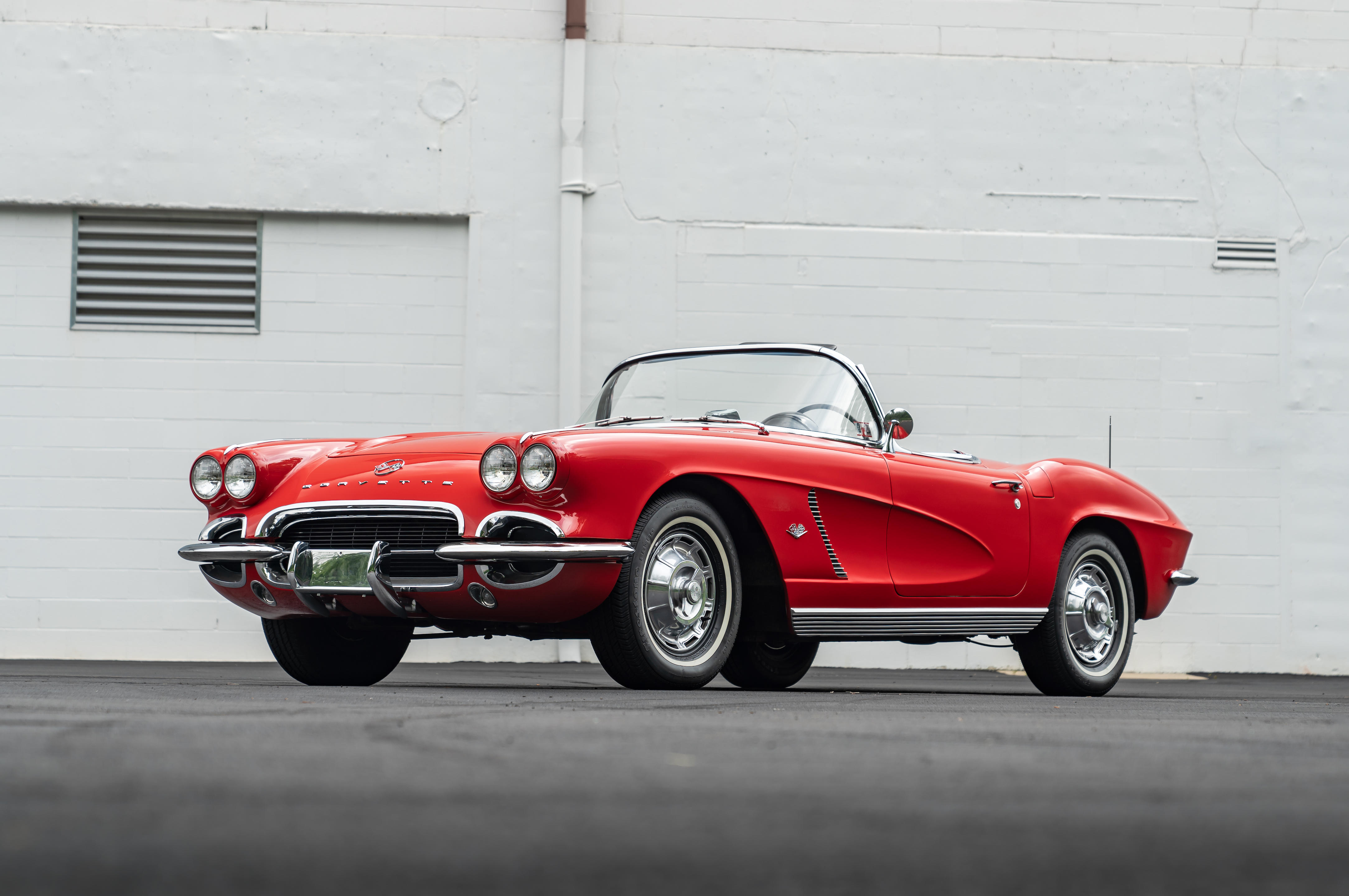

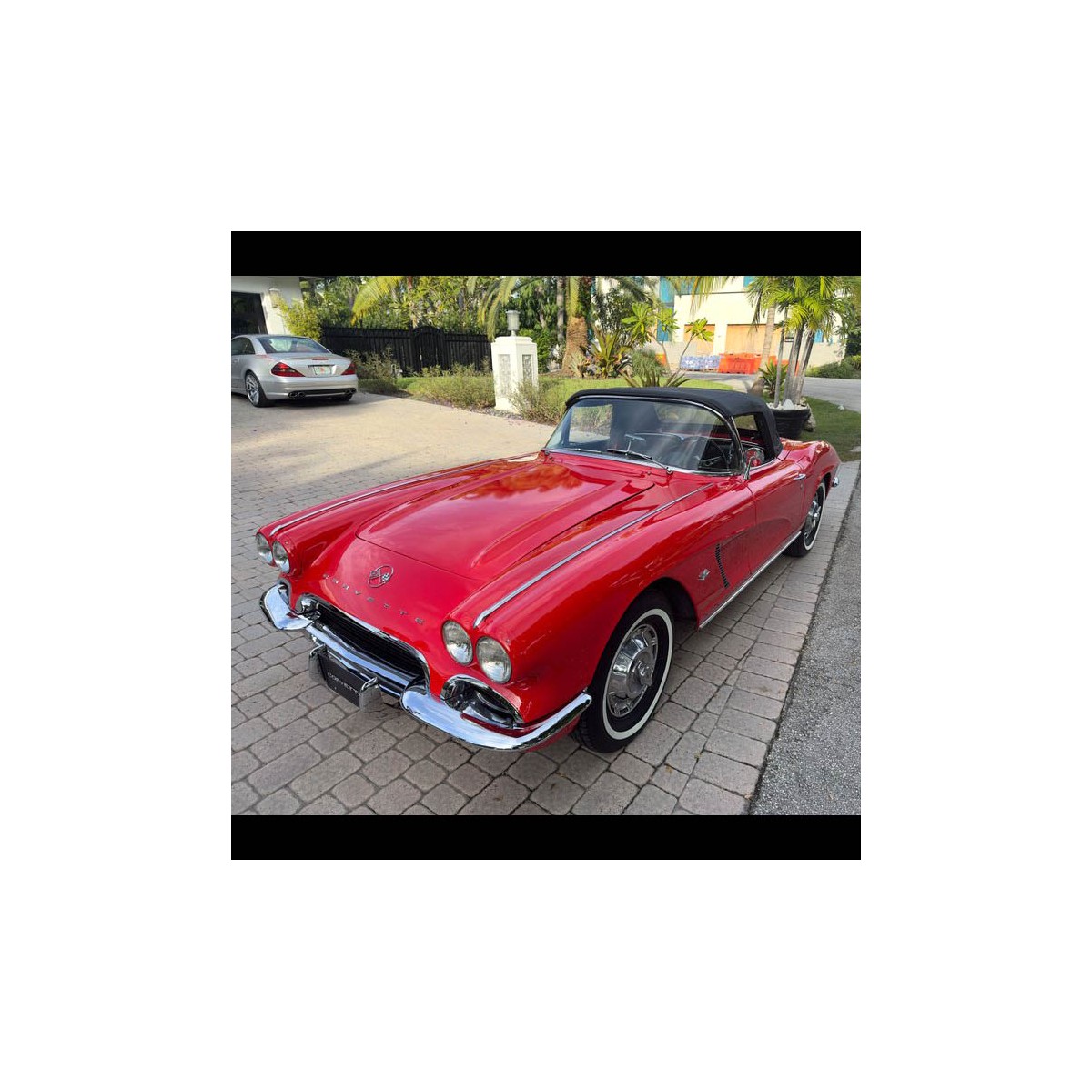
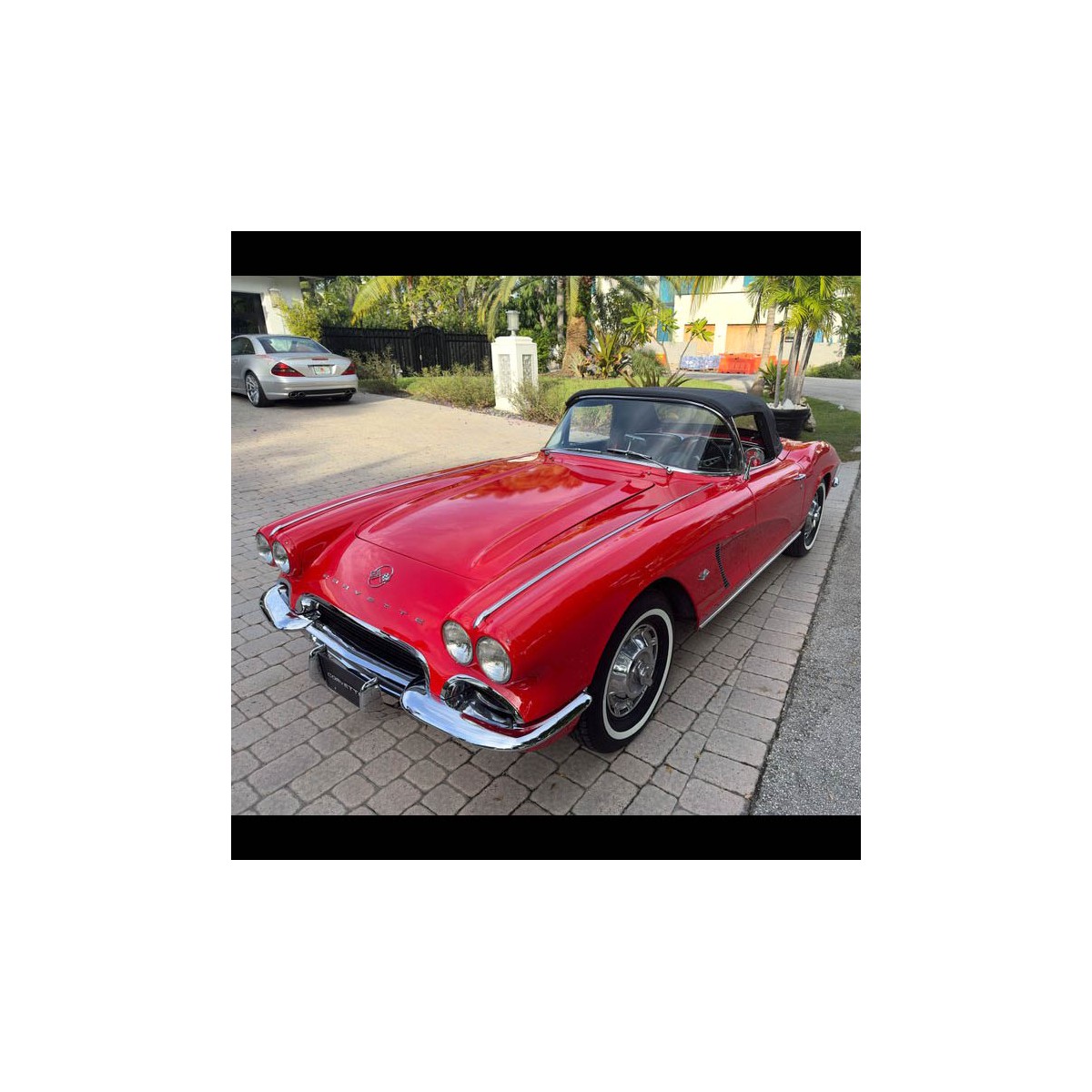
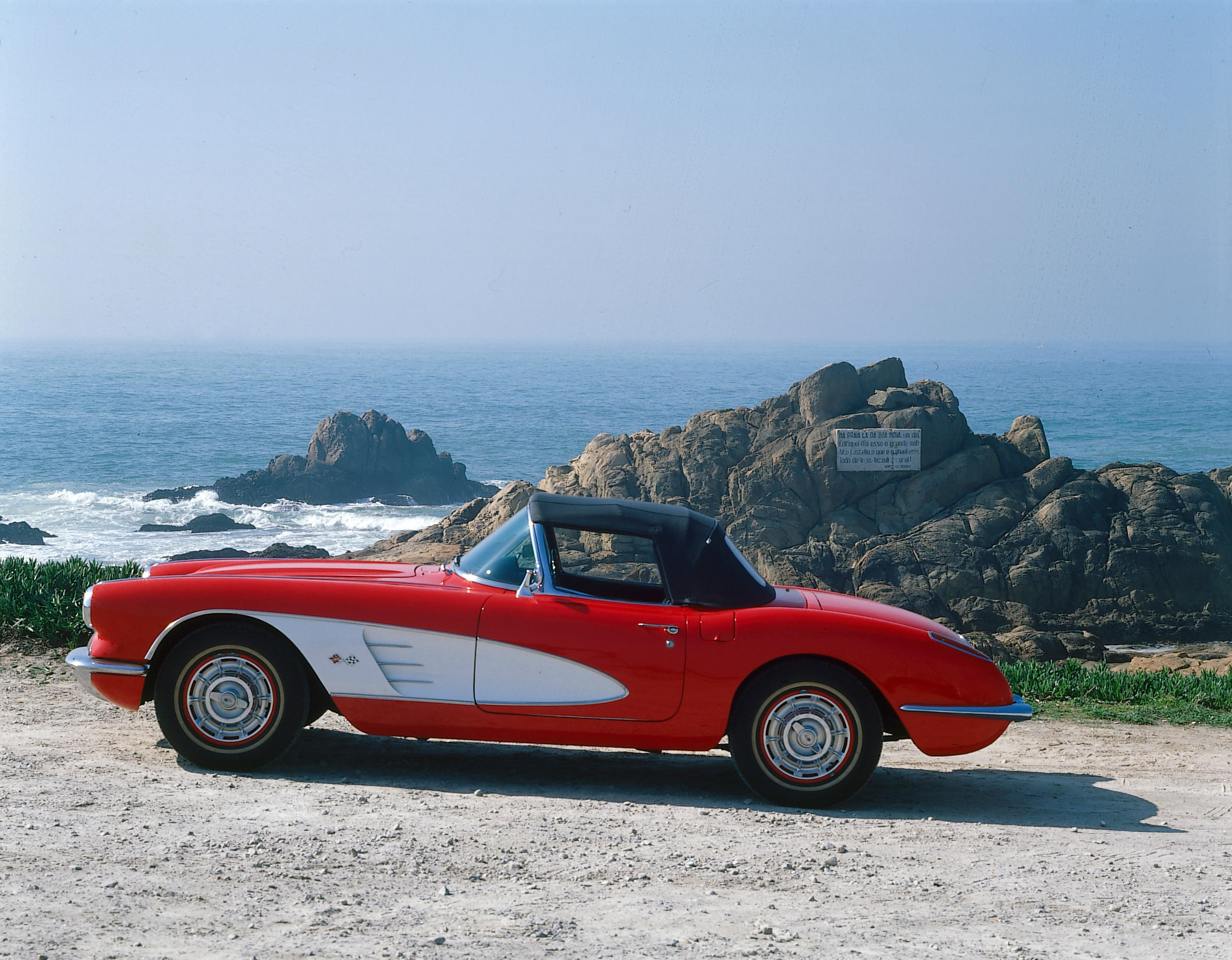

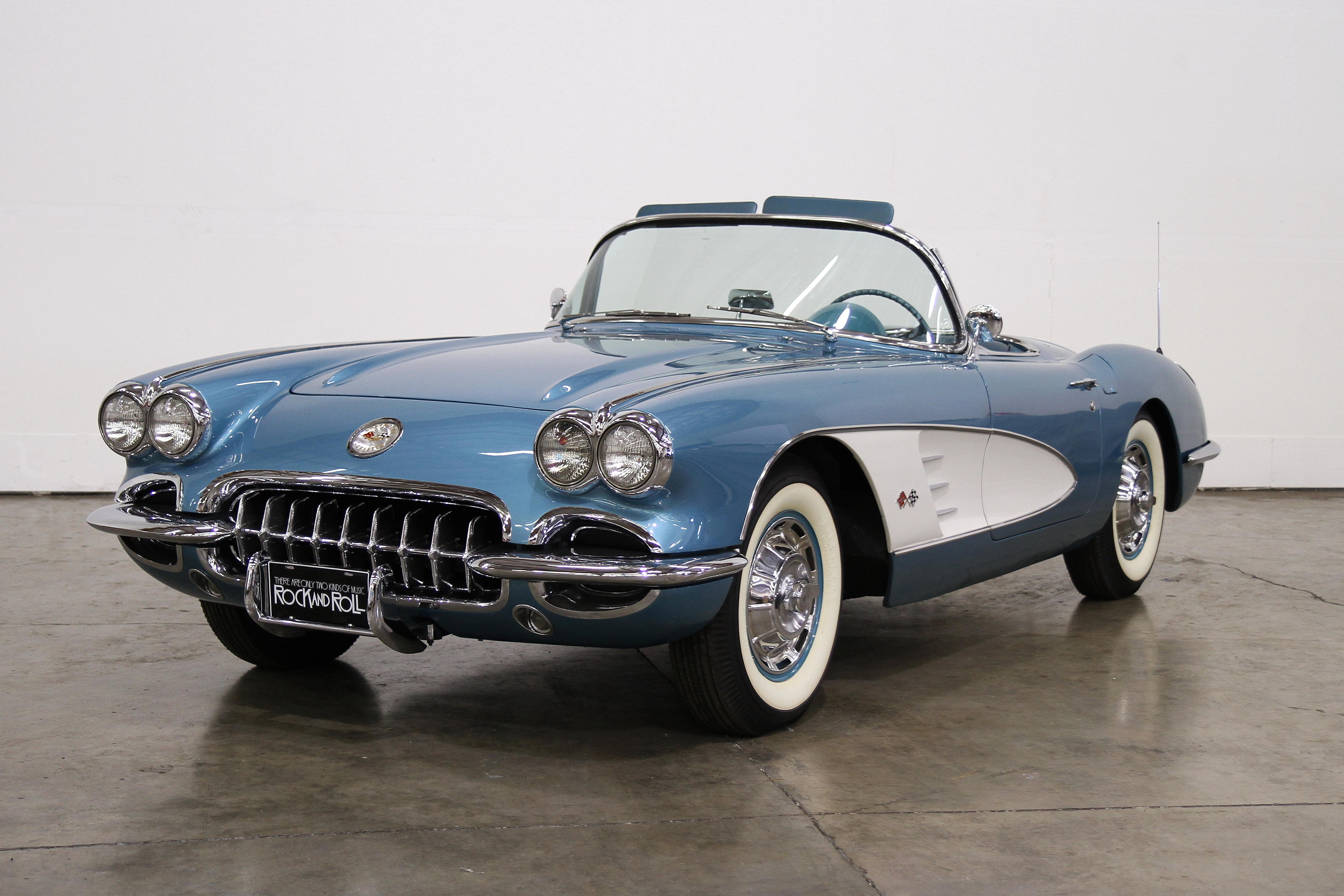
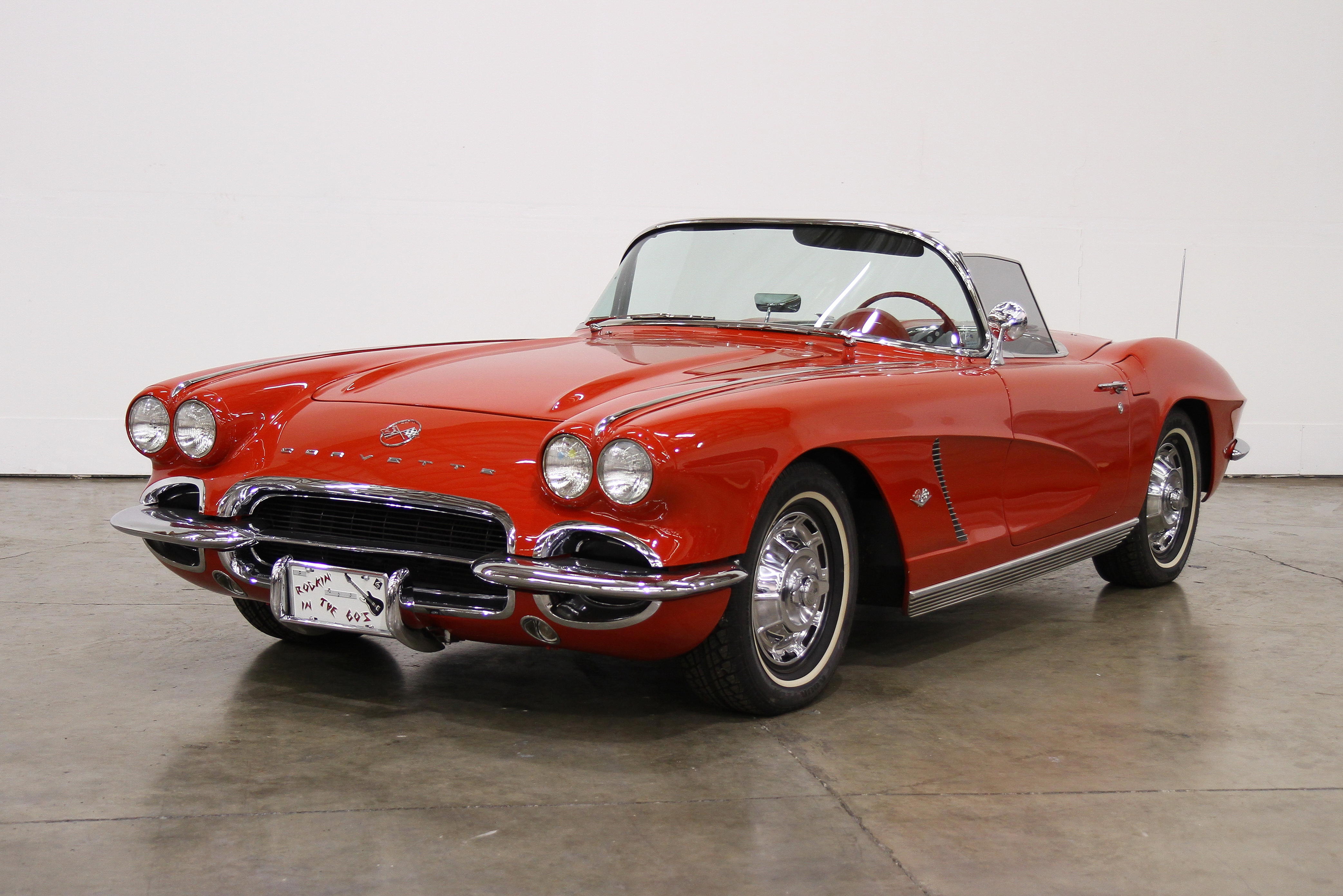
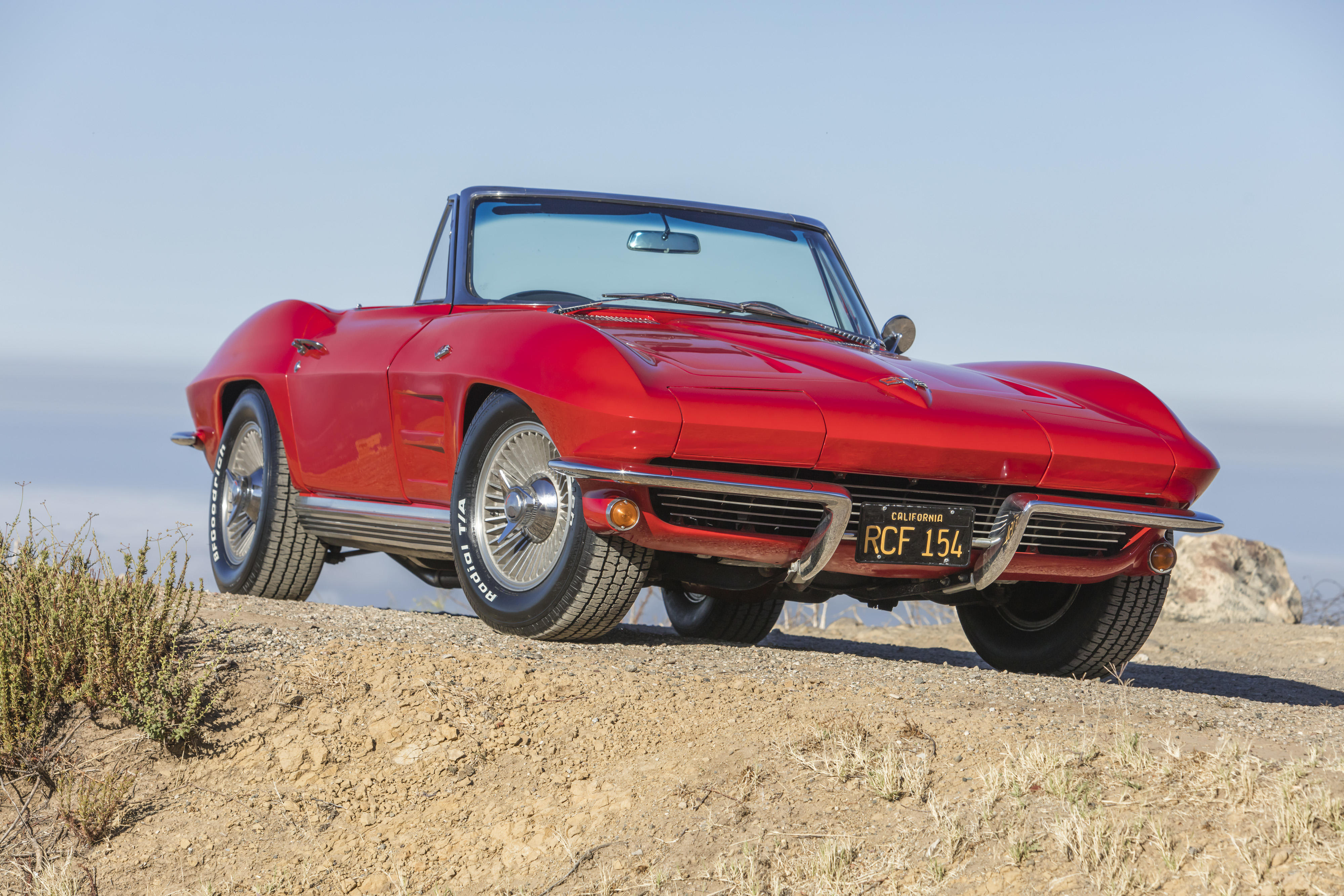
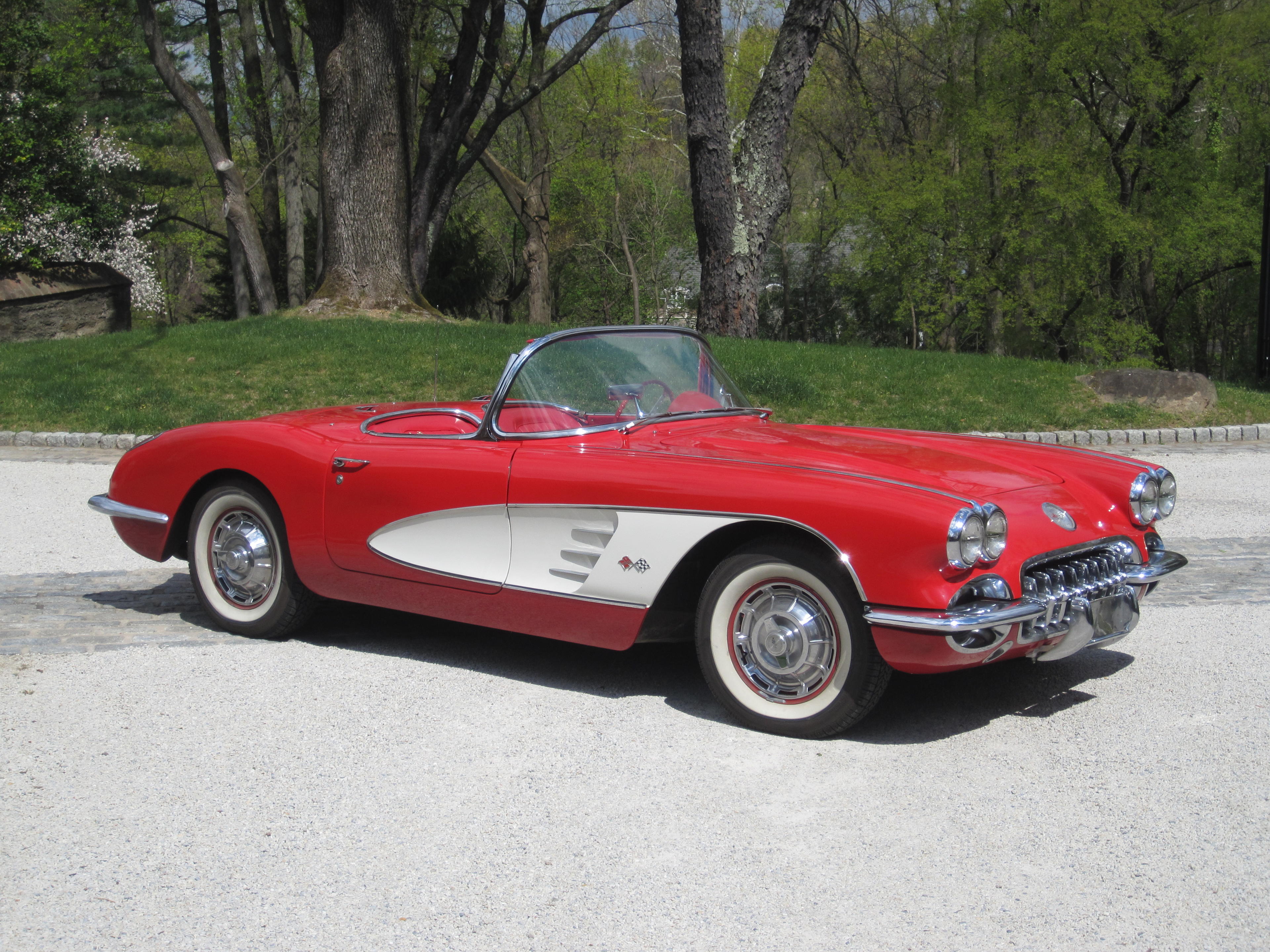
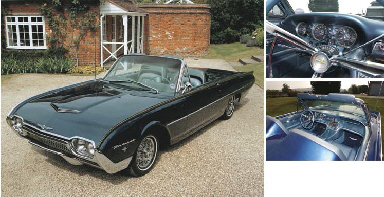

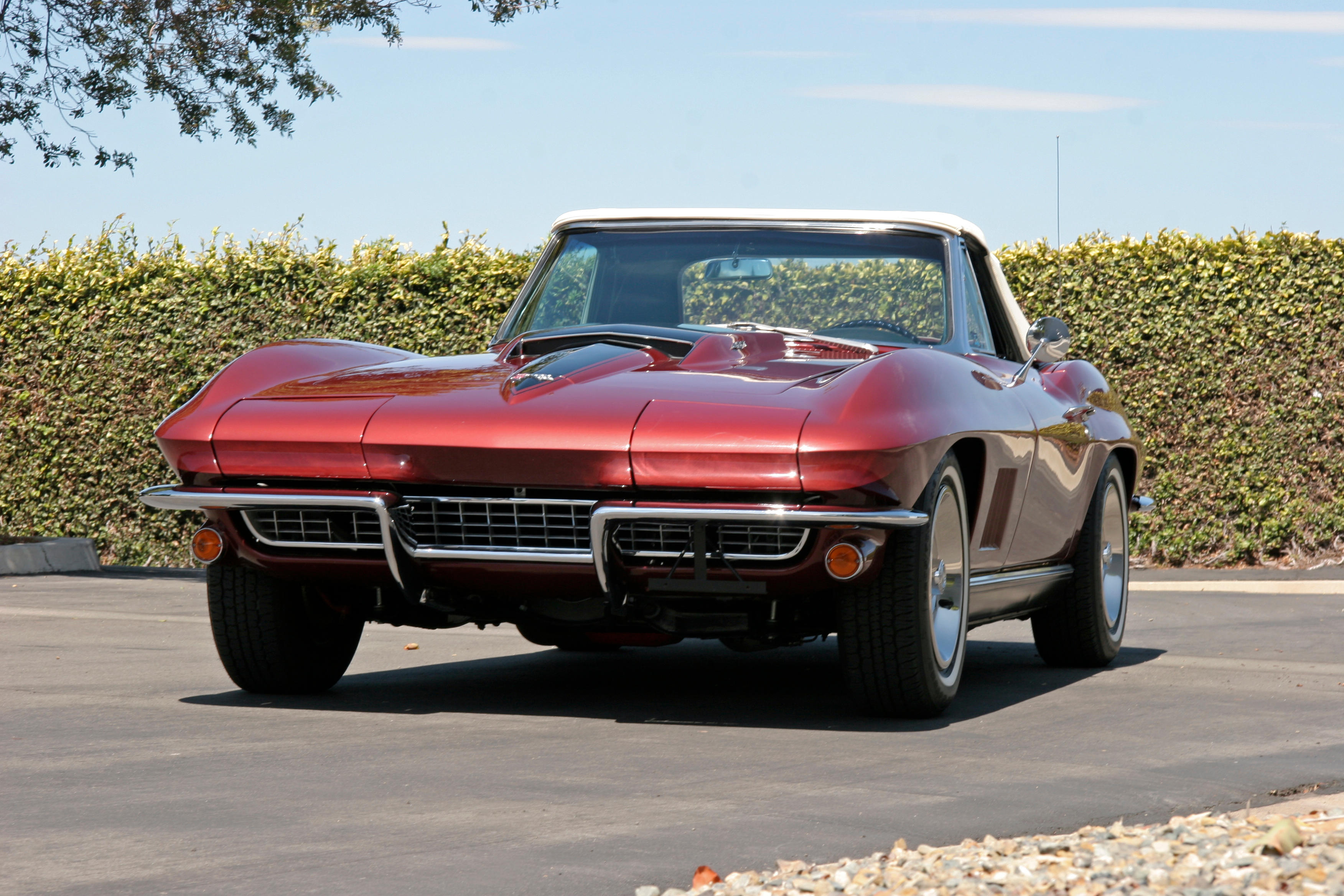
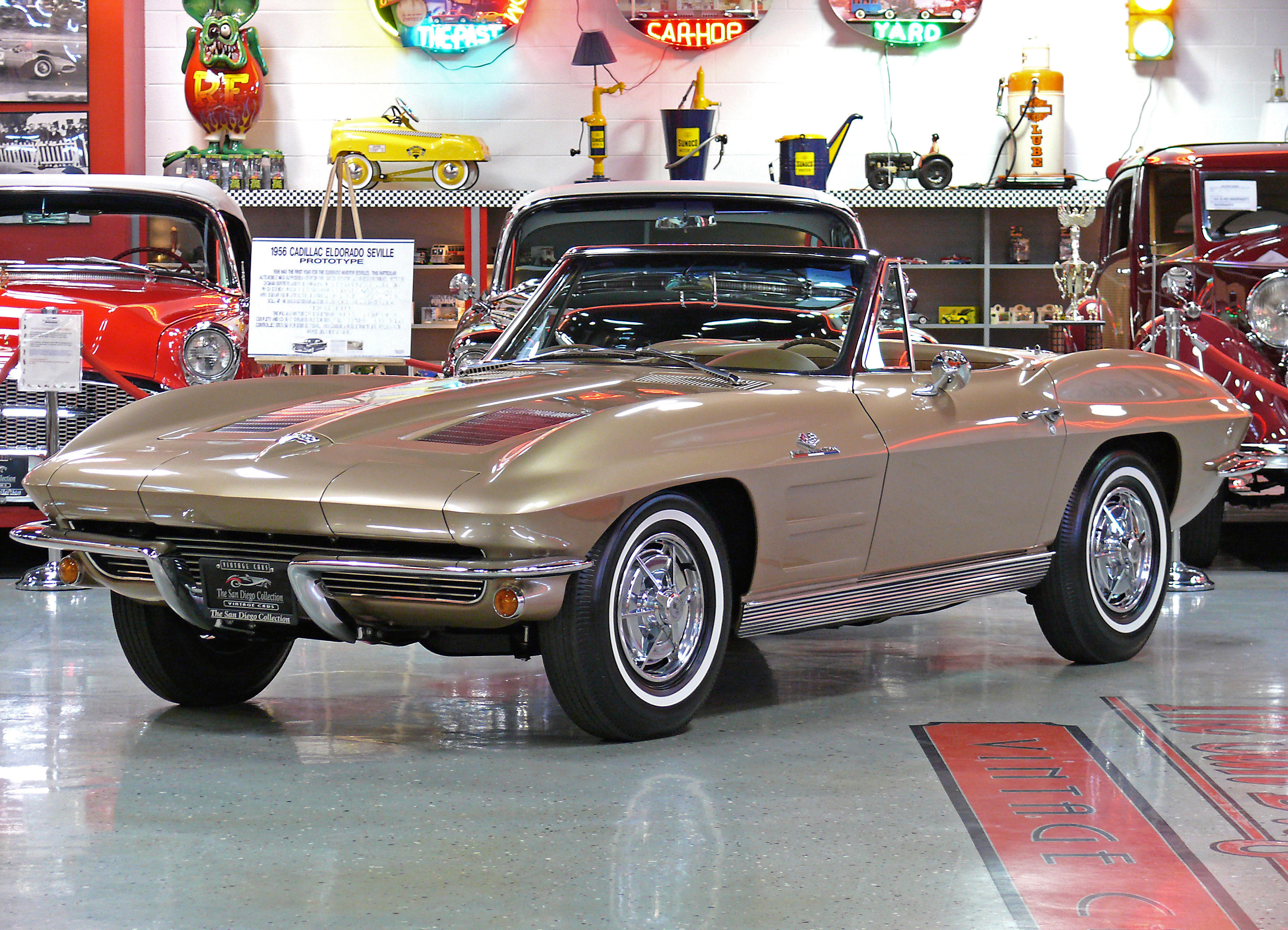
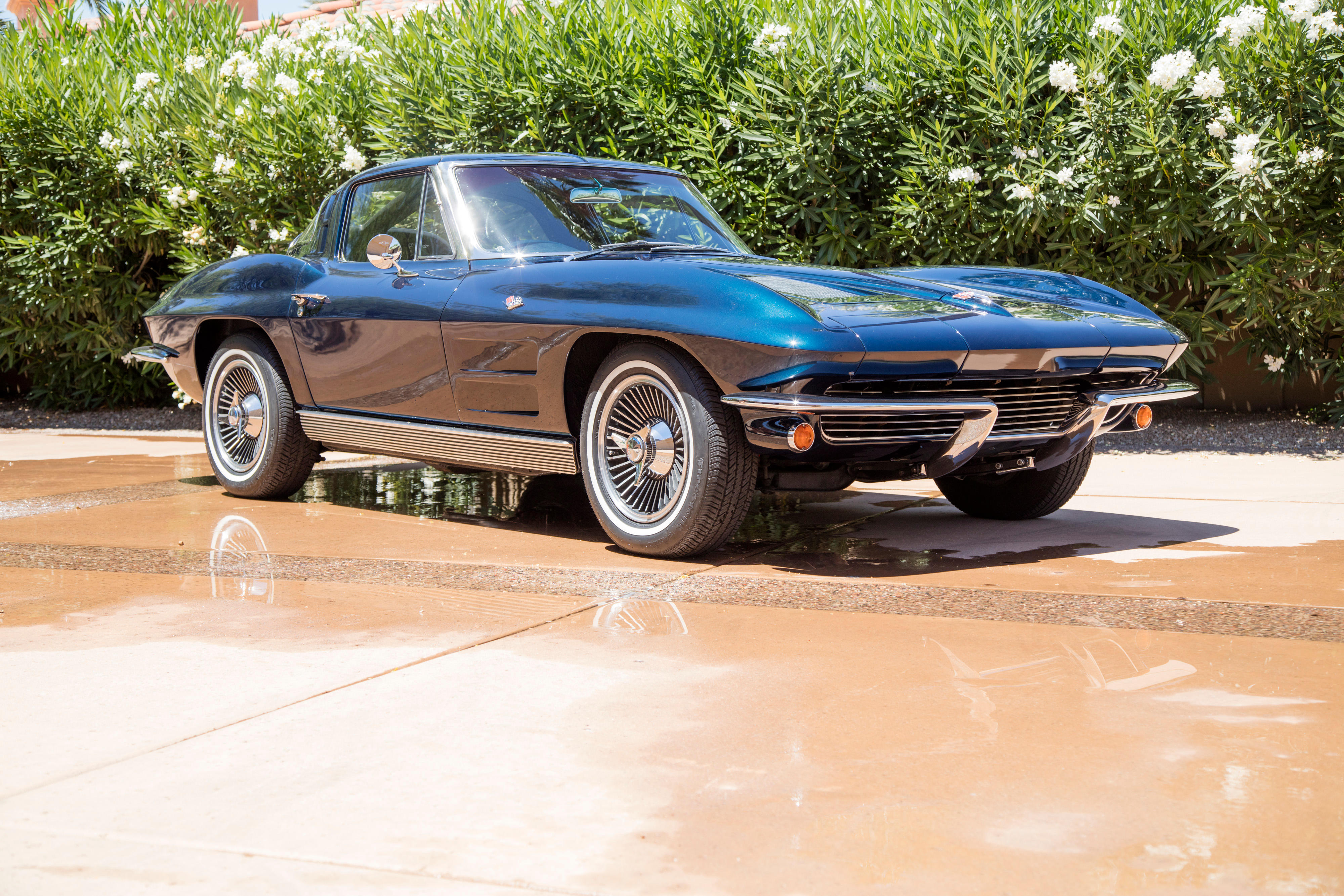
Testen Sie LotSearch und seine Premium-Features 7 Tage - ohne Kosten!
Lassen Sie sich automatisch über neue Objekte in kommenden Auktionen benachrichtigen.
Suchauftrag anlegen